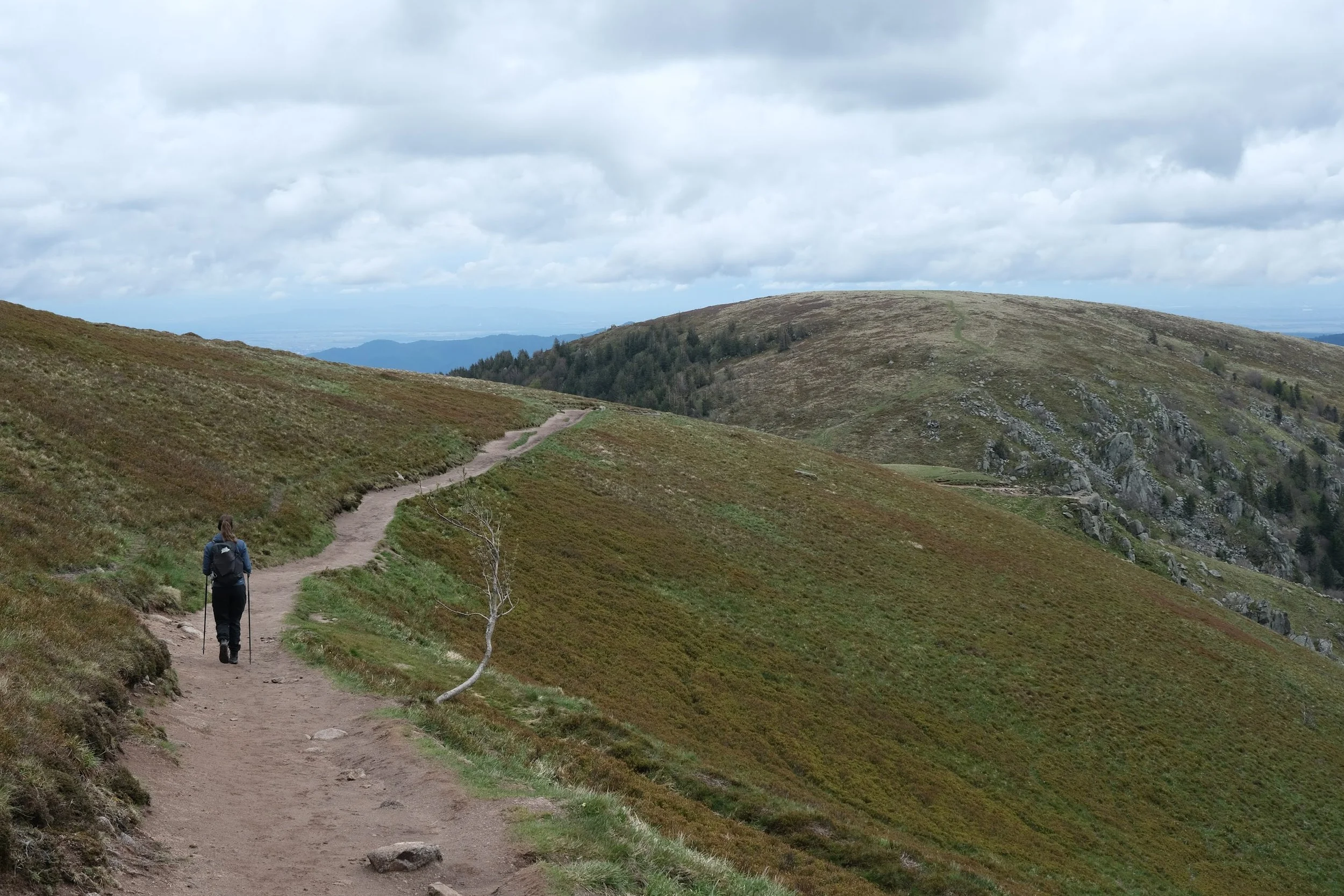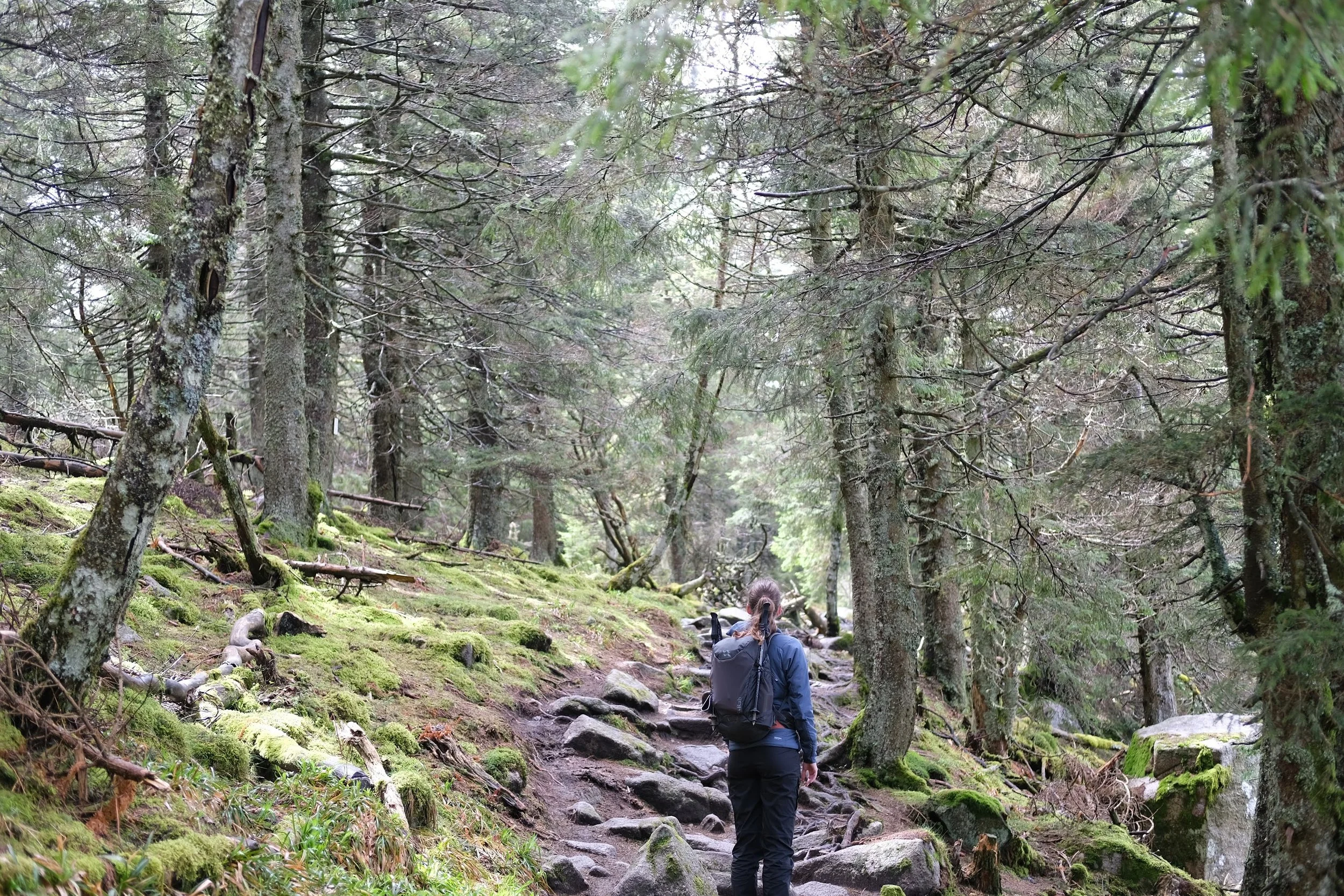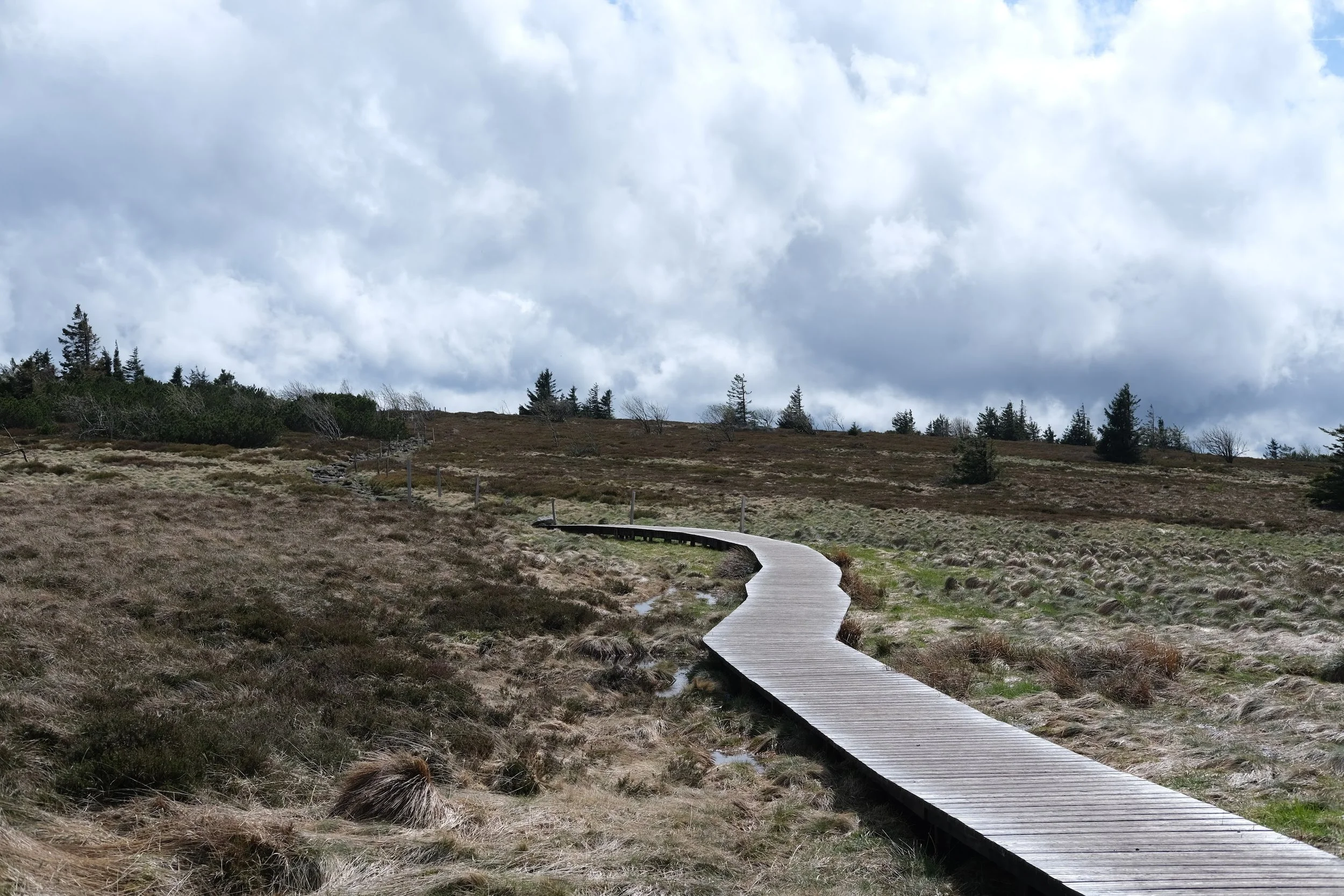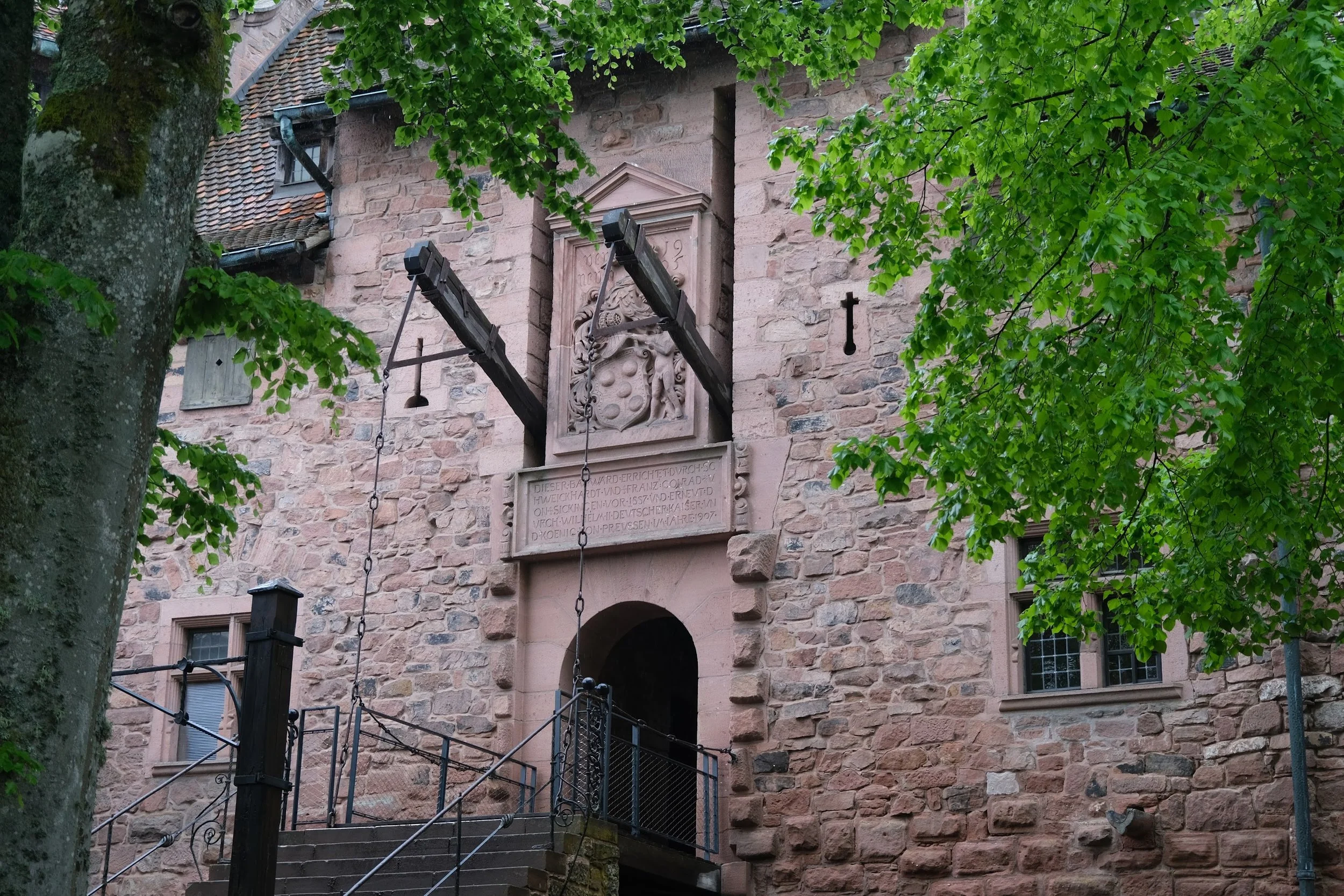Our favourite hikes in the Vosges Mountains
We love the Vosges mountains in France! Being Dutch our country is not know for having any mountains (or hills really), so if we want a bit more height in the outdoors this usually means a very long drive. But while the Alps might be far away and covered in snow for most of the year, the Vosges Mountains in the northeast of France remain a lot more accessible. So let us tell you all about the best hikes to do here in the shoulder season.
About the mountains
We won’t subject you to a history lesson, but if you are considering going to the Vosges you should know a few interesting facts. First of all, these mountains are one of the five mountain ranges in France. They used to form the border with Germany but history has seen this border move more towards the east. The mountain range can be divided into three parts: the western, central and eastern sides. The western part used to have a lot textile industry from which a lot of old building still remain. This is a more remote and also poorer part of the Vosges. The central part knows higher peaks and a lot of tourism, it holds lakes, ski resorts, mountain bike paths and anything else you could want. Finally, the eastern part borders the Alsace and is know for wine with a lot of cute villages. If you are in the region, some villages worth visiting are Gérardmer and Colmar.
Hiking routes
The Vosges are amazing for lovers of the outdoors. With thousands of kilometers of hiking paths you can always find a route that fits your level. There are trails fit for small children and more demanding routes with over a 1000m of elevation gain and some tricky climbs.
When you head into the mountains here, you’ll soon notice that almost all paths are marked by various shapes such as circles and triangels in different colors. Since 1872 Club Vosgien has been active in the region to protect the nature in these mountains. They are in charge of the maintenance and waymarking over 20.000 km of paths and trails in the Vosges Mountains. They do this with the help of over 700 volunteers. In addition, they manage their own hostels and maintain mountain refuge huts which can be used all year long. When you take a trail in the Vosges Mountains, you will definitely come across their waymarks and might also spot some of their refuges which hold a lot of history!
Our favourite routes
Since we spent a lot of time in the Vosges Mountains we have tried a lot of hiking routes. Below are our favorite hikes, why we loved them and a link to the gpx track if you’re interested in doing them yourself! We picked all our routes from a Rother hiking book about the Vosges Mountains written by Bernhard Pollmann (ISBN: 978-90-389-2451-9) with some small tweaks you can see in the GPX files.
Climbing up Le Grand Ballon
This is one of the more challenging hikes in the region mainly due to the fact that you are climbing up to the highest point in the Vosges: Le Grand Ballon. The hike is over 24 km long and starts at a small monastery in Murbach. You can park your car in the small village for free and take a look at the beautiful building. Most of this route is through the forest, but after a lot of climbing you will get views of both the Black Forest and Grand Ballon itself. After a few hours of climbing, suddenly you are out of the forest and in the clear: you have made it back to civilization and are almost at the top. Be prepared for a small shock over the amount of people. Le Grand Ballon can also be reached by car and bike and is a tourist spot. From here, you can take the time to enjoy a coffee and some food in one of the restaurants before taking on the final climb. This is not very technical and a lot busier than the rest of the trail. You’ll climb up to a weather station at the very top of Le Grand Ballon, and with good weather will be able to see all of the surrounding mountains. This also marks your halfway point: from here you start descending the mountain on the other side. The path changes to a more rocky and small route before returning back to the forest. No part of this route is very technical, but the views do change a lot and standing on the highest point of the Vosges is certainly worth it!
Facts & Figures:
Distance: 24,5 kilometers
Elevation: 1235m
Starting point: the village Murbach, parking near the monastery
Le Hohneck and Le Petit Hohneck
This is a route for people who are not afraid of heights! It leads you over one of the most demanding routes in the Vosges leading you all the way up to the highest restaurant in these mountains. Start by parking your car at the ever busy Col de la Schlucht. Be sure to come early because while there is a lot of parking space it fills up quick, especially in good weather. From here, take an easy, but long climb up to Le Hohneck through beautiful forests. Have something warm to drink at the restaurant and be sure to enjoy the views! After Le Hohneck, you start dropping down a beautiful traverse and take another small climb up Le Petit Hohneck. This smaller mountain has a lot less visitors, but does give you a good view on ski lifts and the region. After Le Petit Hohneck, the adventurous part of this route starts. You’ll have to climb down a narrow stone path, sometimes with a big drop on one side. In most cases a railing has been installed to hold onto, but be sure to have steady feet here. You will have to walk through a stone passage, over some trees and hold on well. The last part of this route has another small climb back up to Col de la Schlucht.
Facts & Figures:
Lac Blanc to Gazon du Faing
If you don’t have a lot of time and enjoy some light climbing and imposing views you should check out the Lac Blanc route in Gérardmer. This is a well known and well marked trail that takes you up from the dam at Lac Blanc on a steep, rocky climb to climbing rock Château Hans, giving you amazing views. The initial climb is steep and rocky, but if you take it slow even little kids are able to do it. From this wonderful viewpoint you get several options: there is a route all around the lake, or you can take a different loop which takes you along part of the lake before circling away into the surrounding forest. This route is wonderful, has dramatic views, but you should also be prepared for mud and wet feet if it rained recently. For some parts, boardwalks have been placed to keep your feet dry but this is not always enough. You’ll walk through wide open landscapes and on small forest pats, before diving back down the way you came to the carpark.
Facts & Figures:
Col de la Schlucht to Lac Vert
This is a route that is originally about 18km long. We chose to shorten it a bit, by looping back around Lac Vert. You start out from Col de la Schlucht, and climb up through forest paths with good views to parking Dreieck. Here, you can choose to walk further to Gazon du Faing, or do what we did and cross over to Ferme Auberge Gaertlesrain and Lac Vert. This is a beautiful light green mountain lake surrounded by forests. The color comes from floating algae. From here, partly through forest and over ski slopes you walk back to Col de La Schlucht. This is not a very demanding route, which makes it ideal for an afternoon get away. The views are great and you pass plenty of opportunities for som food and drink along the way.
Facts & Figures:
Other must visits
Château de l’Œdenbourg
If you are staying in the region, there is more to see than just the beautiful nature! For example, check out Château de l’Œdenbourg. This beautiful castle was build in 1248 and has a very interesting history. It is easily accessible by car, has a small entrance fee and makes a wonderful excursion on a rainy day. Do note that while there is free parking, if it is busy you might have to walk for quite a bit before reaching the castle. It is all flat so should be accessible to most people.
Second-hand store Emmaus in Fraize
If castles are not your thing, but second hand shopping is we have another gem for you! In the small town Fraize is an wonderful Emmaus store. This second hand store is located in an old factory building and sells almost anything. The main store entrance focuses on ‘normal’ second hand items, such as ceramics, art, and small appliances. They also sell a lot of clothing here. However, if you go outside, you walk into a large courtyard. If you walk to the right you’ll find the entrance to the furniture section and this is where the gems are! If you are a fan of wooden, classical furniture this is the place to be. The sell a lot, from large cabinets and closets to smaller side tables. While the employees don’t speak a lot of English, go in with your best French and some sign language and you will have bought a wonderful, unique piece for your house in no time. Just make sure it fits in your car on the way back home. Finally, if you’re looking for more, the back side of the courtyard holds a lot of DIY items, from spare batches of tile, to lamps and anything you might need for construction. Take the time to look over everything and you just might find a gem.
Colmar
Our final recommendation is to visit the city of Colmar. The city is also called Little Venice due to its small canals and quaint houses. The city offers a lot of restaurant options and small shops for all your souvernirs if you are looking for that kind of thing. In addition, the city considers itself the Alsace wine-capital, so if you want to taste some wonderful local wines, this is the place to do it!























